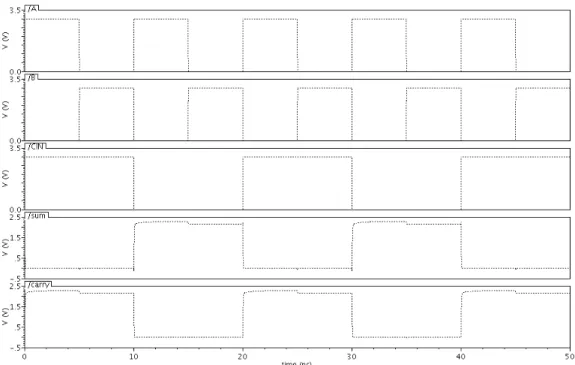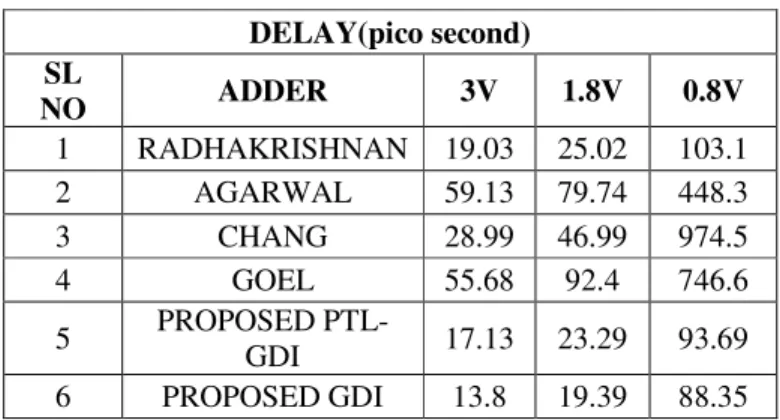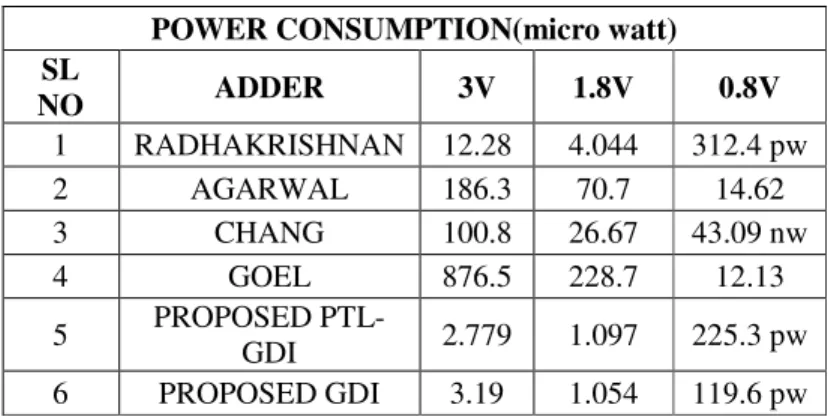Rajkumar Sarma
1and Veerati Raju
21
School of Electronics Engineering, Lovely Professional University, Punjab (India) rajkumar.sarma86@gmail.com
2
Department of VLSI, Lovely Professional University, Punjab (India) rajureddyv@gmail.com
ABSTRACT
Adder cells using Gate Diffusion Technique (GDI) & PTL-GDI technique are described in this paper. GDI technique allows reducing power consumption, propagation delay and low PDP (power delay product) whereas Pass Transistor Logic (PTL) reduces the count of transistors used to make different logic gates, by eliminating redundant transistors. Performance comparison with various Hybrid Adder is been presented. In this paper, we propose two new designs based on GDI & PTL techniques, which is found to be much more power efficient in comparison with existing design technique. Only 10 transistors are used to implement the SUM & CARRY function for both the designs. The SUM and CARRY cell are implemented in a cascaded way i.e. firstly the XOR cell is implemented and then using XOR as input SUM as well as CARRY cell is implemented. For Proposed GDI adder the SUM as well as CARRY cell is designed using GDI technique. On the other hand in Proposed PTL-GDI adder the SUM cell is constructed using PTL technique and the CARRY cell is designed using GDI technique. The advantages of both the designs are discussed. The significance of these designs is substantiated by the simulation results obtained from Cadence Virtuoso 180nm environment.
KEYWORDS
GDI, PTL, PDP, low power, Full Adder & VLSI.
1.
I
NTRODUCTIONFigure 1 that clock signals consumes 45% of the total power, which is very high in fact. As power dissipation has become one of the most important constraints in the design flow of modern processors, therefore, under this common scenario, it has become extremely important to consider the power consumption of any proposed module when there are non-transitioning input data or there is no clock signal activity.
Control IO, 10 Clock, 45 Memor y, 15 Datapat h, 30
Figure 1. Shows the power consumption breakdown in a modern day high-performance microprocessor
Very often, the utmost integrated circuit performances are restricted by how best the arithmetic operators are implemented in the cell library provided to the designer for the synthesis. As the complexity of arithmetic circuits grows with increasing processor bus width, energy consumption is becoming more important now than ever due to the increase in the number and density of transistors on chip and faster clock. Different CMOS logic styles have evolved for the development of cell libraries. They are likely to perpetuate the ability to further reduce the cost-per-function and improve the performance of integrated circuits. With the lowering of threshold voltage in ultra deep submicron technology, lowering the supply voltage appears to be the most eminent means to reduce power consumption. However, lowering supply voltage also increases circuit delay and degrades the drivability of cells designed with certain logic styles. For example the goal to extend the battery life span of portable electronics is to reduce the energy expended per arithmetic operation, but low-power consumption need not necessarily implies low energy. To execute an arithmetic operation, a circuit can consume very low power by clocking at extremely low frequency but it may take a very long time to complete the operation.
Several logic styles have been used in the past to design full adder cells. Each design style has its own merits and demerits. Classical designs of full adders normally use only one logic style for the whole full-adder design. For example the static CMOS design, Pass Transistor Logic (PTL), Transmission Gate Logic and Complementary Pass Transistor Logic (CPL) etc. There are various advantages of one with another (i.e. if we compare different logic styles), which is discussed in the literature [2], [3], [4] & [5].
1.1 Introductions to GDI (Gate Diffusion Input)
GDI method is based on the use of a simple cell as shown in figure 2. At the first look the design is seems to be like an inverter, but the main differences are 1) GDI consist of three inputs- G (gate input to NMOS/PMOS), P (input to source of PMOS) and N (input to source of NMOS). (2) Bulks of both NMOS and PMOS are connected to N or P (respectively), so it can be arbitrarily biased at contrast with CMOS inverter. Figure 4 shows the basic GDI cell.
Figure 2. Basic GDI cell
Table 1 shows, as discussed in [9], how a simple change of the input configuration of the simple GDI cell corresponds to very different Boolean functions. Most of these functions are complex (6- 12 transistors) in CMOS, as well as in standard PTL implementations, but very simple (only 2 transistors per function) in GDI design method.
Table 1: Various logic functions of GDI cell for different input configurations
N P G Out Function
‘0’ B A B F1
B ‘1’ A +B F2
‘1’ B A
A+B OR
B ‘0’ A
AB AND
C B A B+AC MUX
1.2 Introductions to PTL (Pass Transistor Logic)
2.
D
IFFERENTH
YBRIDA
DDERSSeveral low-power and high-performance 1-bit hybrid Full Adder cells had been reported in the literature [1]. Here four different hybrid Full Adder Cells, which were reported to have better performance than others are reviewed and analyzed. The adders considered in this work were designed using traditional implementing methods, i.e. they use only transistors and no input capacitors are used.
In Radhakrishnan Adder [5] a minimal transistor CMOS pass network XOR-XNOR cell that is fully compensated for threshold voltage drop in MOS transistors, is presented by the author. This new cell can reliably operate within certain bounds when the power supply voltage is reduced to certain level. It uses only six transistors for the combined XOR-XNOR cell and can operate reliably when the supply voltage is scaled down, as long as the voltage is not allowed to fall below double of threshold voltage. The total number of transistor used here for full adder operation is 14. The Design circuit is shown in figure 3.
The Chang Adder [3] uses 26 transistors and it utilizes a modified low-power XOR/XNOR circuit. In this circuit worst case delay problems due to logic transitions are solved by adding more transistors; however, these additional transistors increase the power consumption of the full adder cell. The Design circuit is shown in figure 4.
Figure 3. Radhakrishnan Adder [5]
Figure 4. Chang Adder [3]
Figure 5. Goel Adder [4]
The Agarwal Adder [2] uses the Complementary Pass transistor Logic (CPL). This adder is mainly composed by NMOS transistors with pull–up PMOS transistors to obtain full swing output voltage. Due to positive feedback and use of NMOS transistors, the circuit is inherently fast. This adder has a balanced structure with respect to generation of SUM and CARRY signals. The Design circuit is shown in figure 6.
Figure 6. Agarwal Adder [2]
3.
P
ROPOSEDA
DDERSThe designs are based on XOR-XOR based full adder style. The basic SUM as well as CARRY functionality is as follows:
H=A XOR B SUM=H XOR Cin CARRY=H’A + HCin
3.1
Proposed PTL-GDI Adder
In this design the SUM cell is designed using Pass Transistor Logic (PTL) and the CARRY cell is designed using Gate Diffusion Technique (GDI). Firstly the H function is been generated using two PMOS and two NMOS transistors and then using Cin and H as input the SUM function is obtained. The total number of transistor used is eight to obtain the SUM cell.
and source of NMOS to the GND, two different inputs are provided through the sources of PMOS and NMOS. For CARRY calculation again H is used as input to the Gate and A & Cin variables are connected to the Source of PMOS and NMOS respectively. The output waveform is shown in figure 9.
The logic characteristics are satisfied in PTL-GDI design. For example considering ABCin 101,
as A is HIGH and B is LOW, the PMOS transistors passes the value of A (i.e. 1). In this case the pull down circuit will be inactive. So the value of H is 1. Now in the SUM circuit, as H and Cin both are HIGH, the PMOS circuit will be OFF and the pull down circuit will be ON. This will produce Logic ‘0’ at the SUM output. On the other hand in the CARRY cell, as H is HIGH, the NMOS transistor is ON. So it will pass the value of Cin (i.e. 1) to the CARRY output.
Figure 7. Proposed PTL-GDI based SUM cell
3.2Proposed GDI Adder
In this design the SUM as well as CARRY cell is designed using GDI technique. It needs totally 8 transistors to implement the SUM cell and 2 transistors to design CARRY cell. Firstly H function i.e. XOR is implemented using GDI technique and then using this H function as input, the overall SUM as well as CARRY cell is been implemented. The CARRY cell design is similar to the CARRY cell of the Proposed PTL-GDI Adder. The overall circuit is shown in figure 8. The output waveform is shown in figure 10.
The logic characteristics are satisfied in Proposed GDI design too. Again considering the same
example ABCin 101, as A is HIGH and B is LOW, the PMOS transistor (where B is connected
Figure 8. Proposed GDI based SUM cell
.
Figure 10. Output waveform of Proposed GDI Adder
4.
S
IMULATIONE
NVIRONMENTAll the adders are designed and simulated in Cadence Virtuoso 180nm technology. Their performances are measured in different supply voltages such as 3V, 1.8V and 0.8V at 100MHz. The delay was measured from 50% of the input voltage swing to 50% of the output voltage swing. Mainly three parameters are compared in this analysis; they are Delay, Power Consumption and Power Delay Product (PDP). In order to have a fair comparison, all the simulated circuits are prototyped at optimum transistor sizing. The transistor sizes of all the simulated circuits have been included in the figures. In the circuits, the numbers depict the width (W) of the transistors with the minimum feature size as 2µm.
4.1
Simulation results and discussion
By optimizing the transistor sizes of the full adders considered, it is possible to reduce the delay of all adders without significantly increasing the power consumption, and transistor sizes can be set to achieve minimum PDP. All adders were designed with minimum transistor sizes initially and then simulated. To achieve minimum PDP, an iterative process of redesigning and transistor sizing after post-layout simulations was carried out. The comparison of full adders designed to achieve minimum PDP is discussed below. In particular, three subsections refer to delay, power, and PDP respectively. In each subsection, effect of varying supply voltage is considered.
4.1.1 Number of Transistor Used
Table 2. Number of Transistor used in various adders
NUMBER OF TRANSISTORS SL
NO ADDER NMOS TOTAL
1 RADHAKRISHNAN 7 14
2 AGARWAL 19 32
3 CHANG 12 26
4 GOEL 11 22
5 PROPOSED PTL-GDI 5 10
6 PROPOSED GDI 5 10
4.1.2 Delay Comparison
As delay is the major issue to determine the characteristics of the design, our one main goal was to reduce the delay. The values of delay obtained for different Vdd values of 0.8V, 1.8V and 3V. To make the comparison easier, Table 3 shows the delay values of different adders at 3V, 1.8V & 0.8V. As we can see from table 2 and table 3 that when the number of transistors decreases the delay also decreases. The delay is found to be very high in the case of Agarwal as well as Goel Adder. Worst performer is Agarwal Adder at 3V Vdd. But when the supply voltage decreases to 1.8V & 0.8V the worst performer is Goel Adder. Moreover in the case of Radhakrishnan Adder, Goel Adder & Chang Adder distorted outputs are generated at 0.8V Vdd (i.e. when the supply voltage decreases beyond some threshold value these adders are found to produce unexpected output).
Table 3: Delay comparison of different adders
DELAY(pico second) SL
NO ADDER 3V 1.8V 0.8V
1 RADHAKRISHNAN 19.03 25.02 103.1
2 AGARWAL 59.13 79.74 448.3
3 CHANG 28.99 46.99 974.5
4 GOEL 55.68 92.4 746.6
5 PROPOSED
PTL-GDI 17.13 23.29 93.69
6 PROPOSED GDI 13.8 19.39 88.35
Now considering the proposed designs i.e. Proposed PTL-GDI Design & Proposed GDI design, the number of transistors used here is comparatively very less. On the other hand the delay is also very low at different supply voltages for both the designs. Moreover both the proposed design produces correct logic characteristics even when the supply voltage is reduced to 0.8V. Looking at the table it can be easily understood that even though the number of transistors used for the proposed design are same but proposed GDI is found to be more delay efficient.
4.1.3 Power Comparison
Goel Adder consumes a huge amount of power. Even though the numbers of transistor used for Agarwal Adder is maximum, its power consumption is found to be very less with respect to Goel Adder. The proposed PTL-GDI design consumes lesser power in comparison with Radhakrishnan Adder even though the numbers of transistors used is only four more in Radhakrishnan Adder. Comparing the Proposed PTL-GDI Adder with Proposed GDI Adder, the power consumption of Proposed GDI Adder is found to be more at 3V. But as the supply voltage decreases Proposed GDI Adder is found to be best performer in the comparison table.
Table 4: Power comparison of different adders
POWER CONSUMPTION(micro watt) SL
NO ADDER 3V 1.8V 0.8V
1 RADHAKRISHNAN 12.28 4.044 312.4 pw
2 AGARWAL 186.3 70.7 14.62
3 CHANG 100.8 26.67 43.09 nw
4 GOEL 876.5 228.7 12.13
5 PROPOSED
PTL-GDI 2.779 1.097 225.3 pw
6 PROPOSED GDI 3.19 1.054 119.6 pw
4.1.4 PDP Comparison
The PDP is a quantitative measure of the efficiency of the tradeoff between power dissipation and speed, and is particularly important when low-power operation is needed. The values of PDP are evaluated under different supply voltages are tabulated in Table 5.
Table 5: PDP comparison of different adders
POWER DELAY PRODUCT(PDP) SL
NO ADDER 3V 1.8V 0.8V
1 RADHAKRISHNAN 0.233 fj 0.101 fj 32.2 zj
2 AGARWAL 11.016 fj 5.613 fj 6.554 fj
3 CHANG 2.922 fj 1.253 fj 0.042 fj
4 GOEL 48.803 fj 21.13 fj 9.056 fj
5 PROPOSED
PTL-GDI 0.048 fj 0.026 fj 21.11 zj
6 PROPOSED GDI 0.044 fj 0.020 fj 10.57 zj
The PDP is measured in Femto joule (fj) and Zepto Joule (zj). The Goel Adder has the maximum PDP even though the numbers of transistor used in Goel Adder is lesser than Agarwal Adder. Though the Chang Adder is found to be best in the literature [1] (with respect to PDP), both Proposed PTL-GDI Adder & Proposed GDI Adder are having very less PDP in different supply
voltages.
5.
C
ONCLUSIONadders have better performance than most of the standard full-adder cells owing to the novels design modules proposed in this paper. It performs well with supply voltage scaling. From the comparison table it can be inferred that both the proposed designs are good performer at different supply voltage conditions. However both the designs have their own advantages. They are:
1) If the supply voltage is above the threshold voltage (for example 3V), it is suggested to
use Proposed PTL-GDI Adder.
2) If the adder is to be used in a wide range of supply voltages (for example 0.8V-3V), it is
suggested to use the Proposed GDI design.
3) Considering Delay into account both the designs are found to be best in different supply
voltages.
A
CKNOWLEDGEMENTThe Authors acknowledge the support of the School of Electronics Engineering (SEE) of Lovely Professional University (LPU), Phagwara, Punjab (INDIA).
R
EFERENCES[1] Monico Linares Aranda, Ramon Báez, Oscar Gonzalez Diaz, “Hybrid Adders for High-Speed Arithmetic Circuits A Comparison”. 7th International Conference on Electrical Engineering, Computing Science and Automatic Control, Sep 2010.
[2] Sundeepkumar Agarwal, Pavankumar V K, Yokesh R., “Energy –Efficient, High Performance Circuits for Arithmetic Units”. 21st International Conference on VLSI Design, pp. 371-376, 2008.
[3] C.-H. Chang, J. Gu, and M. Zhang, “A review of 0.18nm full adder performances for tree structured arithmetic circuits,” IEEE Trans. Very Large Scale Integration Systems., vol. 13, no. 6, pp. 686–695, Jun. 2005..
[4] Sumeer Goel, Ashok Kumar and Magdy A. Bayoumi, “Design of robust, energy efficient full adders for deep-submicrometer design using hybrid-CMOS logic style,” IEEE Trans. Very Large Scale Integration. Systems, vol. 14, no.12, pp.1309–1321, Dec. 2006.
[5] RADHAKRISHNAN, D., “Low-voltage low-power CMOS full adder,” IEEE Proc. Circuits Devices Syst., vol. 148, no. 1, pp. 19–24, Feb. 2001.
[6] RADHAKRISHNAN, D., WHITAKER, S.R., and MAKI, G.K. “Formal design procedures for pass transistor switching circuits”, IEEE J. Solid-State Circuits, 1985, SC-20, pp. 53 1-536
[7] RADHAKRISHNAN, D. “Design of CMOS circuits” IEEE Proc. Circuits Devices Syst., 1991, 138, (I),p p. 83-90
[8] PEDRON, C., and STAUFFER, A. “Analysis and synthesis of combinational Circuits”, IEEE Trans. Commit.-Aided Des. Integr. Circuits Syst. 1988, 7, (7), pp. 775-786
[9] Morgenshteid, A., Fish, A., and Wagner, I., A. “Gate-Diffusion Input (GDI) - a novel power efficient method for digital circuits: a design methodology” IEEE 2001
[10]Nishad, A., K., Chandel, C., “Analysis of Low Power High Performance XOR Gate using GDI Technique”, IEEE Computer Society- International Conference on Computational Intelligence and Communication Systems, 2011
[11]K. Navi, M. Reza Saatchi, O. Daei, “A High-speed hybrid full adder”, European Journal of Scientific Research, vol. 26, no. 1, pp.29-33, 2009
[12]Mohammad Hossein Moaiyeri and Reza Faghih Mirzaee., Two “New Low-Power and High-Performance Full Adders,” Journal of Computers, Vol. 4, No. 2, Feb. 2009
[14]M. Aguirre and M. Linares, “An Alternative Logic Approach to Implement High-Speed Low-Power Full Adder Cells”, Brazilian Symposium on Integrated Circuit Design, pp. 166-171, Sep. 2005. [15]Mariano Aguirre-Hernandez and Monico Linares-Aranda “CMOS Full-Adders for Energy-Efficient
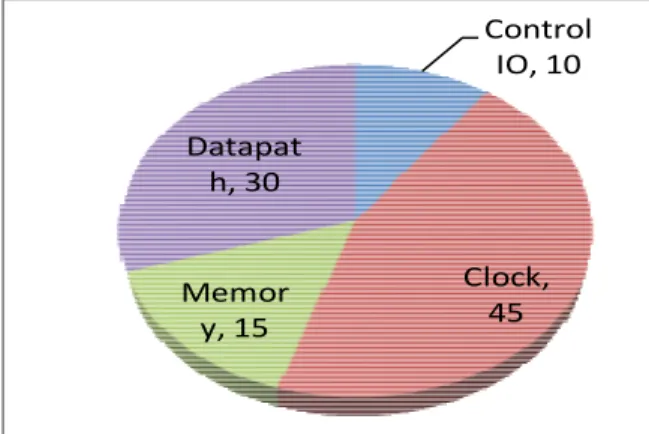
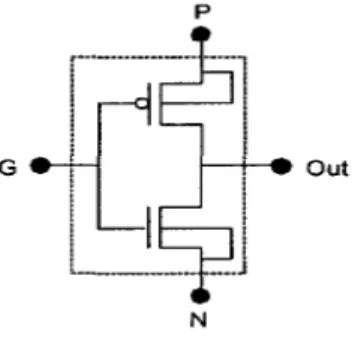
![Figure 3. Radhakrishnan Adder [5]](https://thumb-eu.123doks.com/thumbv2/123dok_br/16280220.184564/4.918.319.619.488.942/figure-radhakrishnan-adder.webp)
![Figure 5. Goel Adder [4]](https://thumb-eu.123doks.com/thumbv2/123dok_br/16280220.184564/5.918.300.628.136.376/figure-goel-adder.webp)


